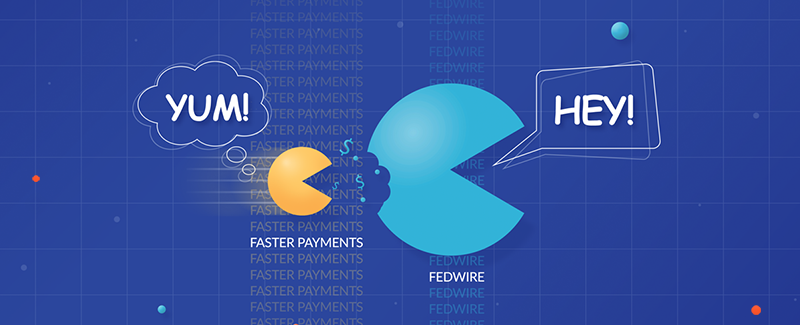Will Faster Payments Cannibalize Your Fedwire Revenue?
Posted by Mark Ranta on 18 Aug 2021


It’s been four years since the launch of The Clearing House’s RTP Network, and as the market continues to embrace and grow the network, one question that many bankers have asked me over that time is, “What will happen to Fedwire?” It was a fair question in 2017 and becoming an ever more readily asked question in 2021, especially as the Faster Payments market matures and new rails come online (we are talking about you, FedNow)! But what will happen to that revenue is a great question. It’s something that many financial institutions will have to grapple with in the coming months and years as the use cases for faster payments grow exponentially and clients start to embrace them—both at a business level and for consumer money movement expectations.
Why would Fedwire revenue be at risk? Well, for one, it’s the “OG” faster money movement system in the U.S.—if you needed to move a large sum of money during business hours, you inevitably used Fedwire to do it (or its cousin from TCH, CHIPS). And I’ll tell you what, it worked! Even as a consumer, I could send money instantly through the Real-Time Gross Settlement system for a small fee of $30-$50, which, if you are moving money for closing on a home, for example, represents a very small percentage fee. The system has worked for the better part of the last half-century and has become a backbone to the U.S’s financial system, used by the largest corporations to move money to meet their needs. Hence the common lingo of “wire me the funds...”
This was all good when the initial use cases of peer-to-peer money movement dominated the discussions on real-time payments ten years ago. Those transactions looked more like the small-dollar or high-volume transactions you’d see in the ACH world that had 2-3 day settlements at the time. However, as the dollar limit increased, the discussion in the U.S. market started to shift. The dollar limit shifted from $25,000 at RTP’s launch to the current $100,000 network limit. Also, there have been announcements about the Same Day ACH limits moving to $1,000,000 next year. There are a decent number of transactions from both the consumer market and business market that, five years ago, were nowhere near the value that was in scope of these new payment rails. With the limits increasing, these transactions are now candidates to move off of the higher cost Fedwire system to the lower cost, modern money movement networks.
So how do you protect the current revenue streams associated with Fedwire? The answer is that you can’t look at the revenue today as you would tomorrow. For one, the rich data that moves with real-time payments in the ISO 20022 model is extremely valuable to business users. As new invoice and remittance data start to move away from email (or even snail mail), users will start to realize the time savings and cost savings associated with the more modern money movement set, which is going to lead to new business models and services that financial institutions provide. Can you charge the same dollar for dollar you did for just the money movement? No… but can you charge for the full end-to-end service and reconciliation for the business? Of course!
Part of payments transformation is breaking down the existing product set and business models in place today and rethinking/rebuilding them for the future of money movement. It won’t be a straight line experience, and there will be growing pains along the way, but the value and ability to think through the full product, solution, and service stack and truly focus on the value creation that is possible with faster money movement capabilities will be the key to unlocking even greater and larger revenue streams.
For an overview of faster payments and use cases of real-life applications, read the blog Faster Payments: Full Speed Ahead.
Today’s legacy and siloed banking technology infrastructure limit financial institutions’ ability to rapidly innovate. It’s time to look at money movement in a new way. Alacriti’s Orbipay Unified Money Movement Services does just that. Whether it’s real-time payments, digital disbursements, or bill pay, our cloud-based platform enables banks and credit unions to quickly and seamlessly deliver modern digital payments and money movement experiences. To speak to an Alacriti payments expert, please call us at (908) 791-2916 or email info@alacriti.com.
Schedule A Personalized Demo
Schedule a Free Consultation





